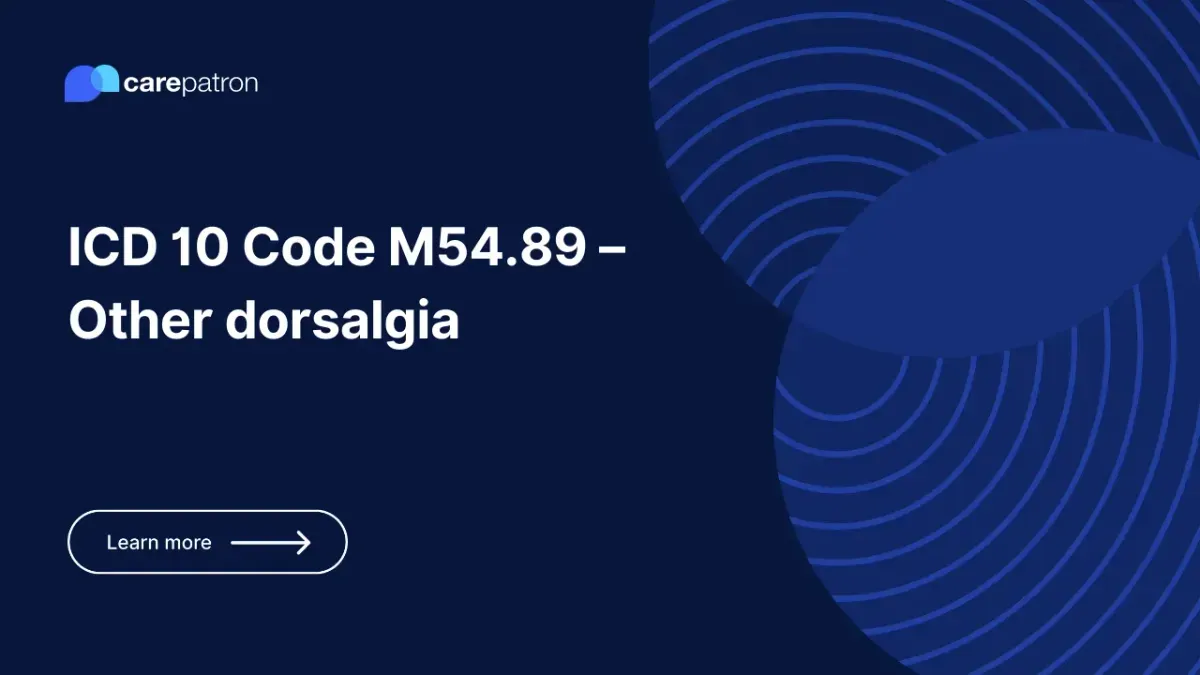
M54.89 – Other dorsalgia
M54.89 – Other dorsalgia: Explore causes and treatments for non-specific back pain. Find relief and improve your quality of life. Seek medical advice today.
Use Code
Commonly asked questions
Symptoms of M54.89 can include pain, discomfort, or stiffness in the dorsal region of the spine, which can be localized or radiating. The severity and specific characteristics of the pain may vary among individuals.
M54.89 is often attributed to poor posture, muscle imbalances, a sedentary lifestyle, heavy lifting, obesity, and psychological stress. However, the exact cause of non-specific dorsalgia can be challenging to determine.
Diagnosis of M54.89 involves a comprehensive assessment that includes a detailed medical history, physical examination, and, if necessary, additional diagnostic tests like X-rays, MRI scans, or CT scans. These help rule out specific pathologies and provide a better understanding of the condition.
EHR and practice management software
Get started for free
*No credit card required
Free
$0/usd
Unlimited clients
Telehealth
1GB of storage
Client portal text
Automated billing and online payments
